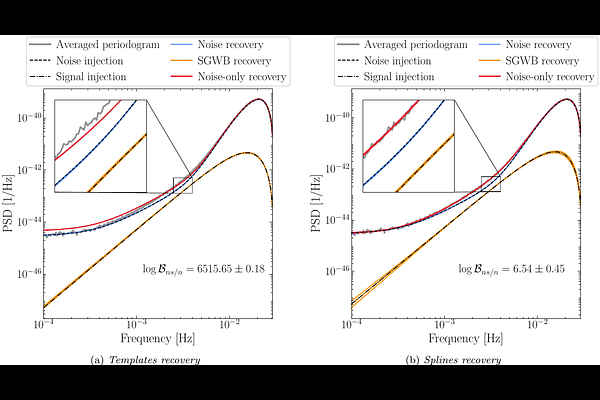A flexible, GPU-accelerated approach for the joint characterization of LISA instrumental noise and Stochastic Gravitational Wave Backgrounds

A flexible, GPU-accelerated approach for the joint characterization of LISA instrumental noise and Stochastic Gravitational Wave Backgrounds
Alessandro Santini, Martina Muratore, Jonathan Gair, Olaf Hartwig
AbstractLISA data analysis represents one of the most challenging tasks ahead for the future of gravitational-wave (GW) astronomy. Characterizing the instrument's noise properties while fitting for all the other detectable sources is a key requirement of any robust inference pipeline. Noise estimation will also play a crucial role in searches and parameter estimation of cosmological and astrophysical stochastic signals. Previous studies have tackled this topic by assuming perfect knowledge of the spectral shape of the instrumental noise and of different possible types of GW Stochastic Backgrounds (SGWBs), usually resorting to parametrized templates. Recently, various works that employ template-agnostic methods have been presented. In this work, we take an additional step further, introducing flexible spectral shapes in both the instrumental noise and the stochastic signals. We account for the lack of knowledge of the exact shape of the individual contributions to the overall power spectral density by using splines to represent arbitrary perturbations of the noise and signal spectral densities. We implement a data-driven Reversible Jump MCMC algorithm to fit different components simultaneously and to infer the level of flexibility required under different scenarios. We test this approach on simulated LISA data produced under different assumptions. We investigate the impact of this increased flexibility on the reconstruction of both the injected signal and the noise level, and we discuss the prospects for claiming a successful SGWB detection.